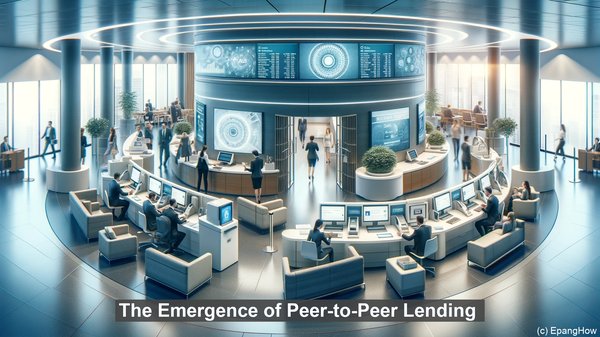Introduction: The Evolving Landscape of Lending
Greetings, everyone! The lending landscape has witnessed a significant transformation in recent years. While traditional bank lending has long been the go-to option, peer-to-peer lending has emerged as a formidable alternative. Today, we’ll explore the nuances of these two methods, highlighting their unique characteristics and benefits.
The Basics: Traditional Bank Lending
Traditional bank lending, as the name suggests, involves borrowing money from a bank or financial institution. Here, the bank acts as the intermediary, connecting borrowers and lenders. The bank assesses the borrower’s creditworthiness, financial history, and collateral, if any, to determine the loan terms. The interest rates, repayment schedules, and loan amounts are typically standardized, based on the bank’s policies and the borrower’s profile.

The Emergence of Peer-to-Peer Lending
In contrast, peer-to-peer lending, often referred to as P2P lending, eliminates the need for a traditional intermediary. P2P lending platforms connect individual lenders directly with borrowers. These platforms leverage technology to match lenders’ investment preferences with borrowers’ requirements. P2P lending gained popularity due to its potential for higher returns for lenders and more accessible financing options for borrowers.

Flexibility and Customization: P2P Lending’s Edge
One of the key advantages of P2P lending is the flexibility it offers. Unlike traditional banks, which often have stringent criteria, P2P platforms can accommodate borrowers with varying credit profiles. This inclusivity is particularly beneficial for individuals or businesses with limited credit history or those who may have faced challenges in obtaining loans through traditional channels. Additionally, P2P lending allows for more customized loan terms, such as adjustable interest rates or repayment schedules tailored to the borrower’s cash flow.
Speed and Convenience: P2P Lending’s Appeal
Another aspect where P2P lending shines is the speed of the loan approval process. While traditional banks may take weeks or even months to process a loan application, P2P platforms leverage automation and digital processes to expedite the process. This quick turnaround time can be crucial for borrowers who require immediate funds, such as in the case of a time-sensitive business opportunity or an unforeseen expense.
Risk and Regulation: A Balancing Act
As with any financial transaction, both P2P lending and traditional bank lending carry their share of risks. In the case of P2P lending, the absence of a traditional intermediary means that lenders bear the risk of default directly. While P2P platforms often have risk assessment mechanisms in place, such as credit scoring models, the risk of borrower default is still a factor. On the regulatory front, traditional banks are subject to stringent oversight and regulations, ensuring consumer protection. P2P lending, on the other hand, is a relatively newer domain, and while regulations are evolving, they may not be as comprehensive as those governing traditional banks.
